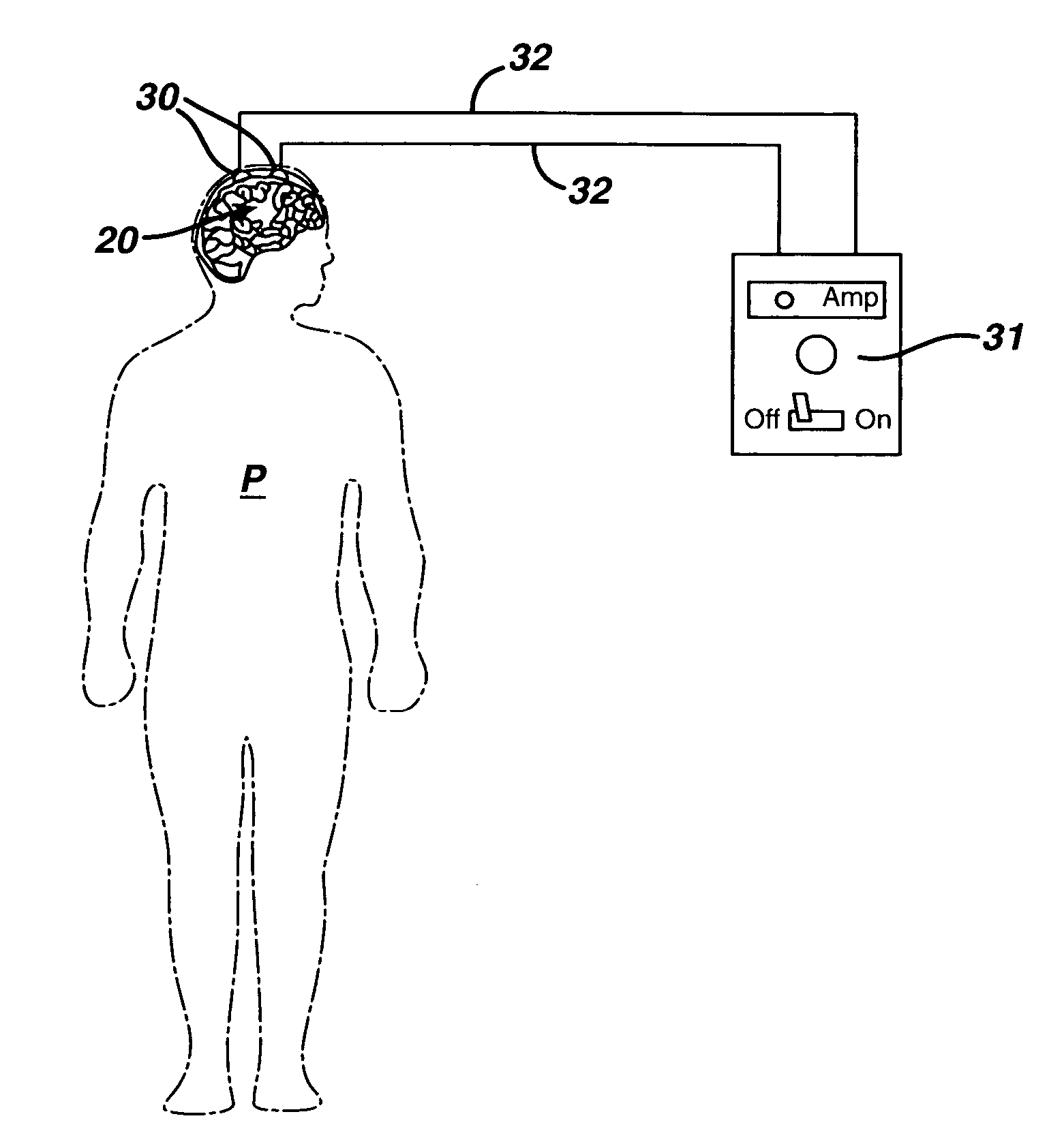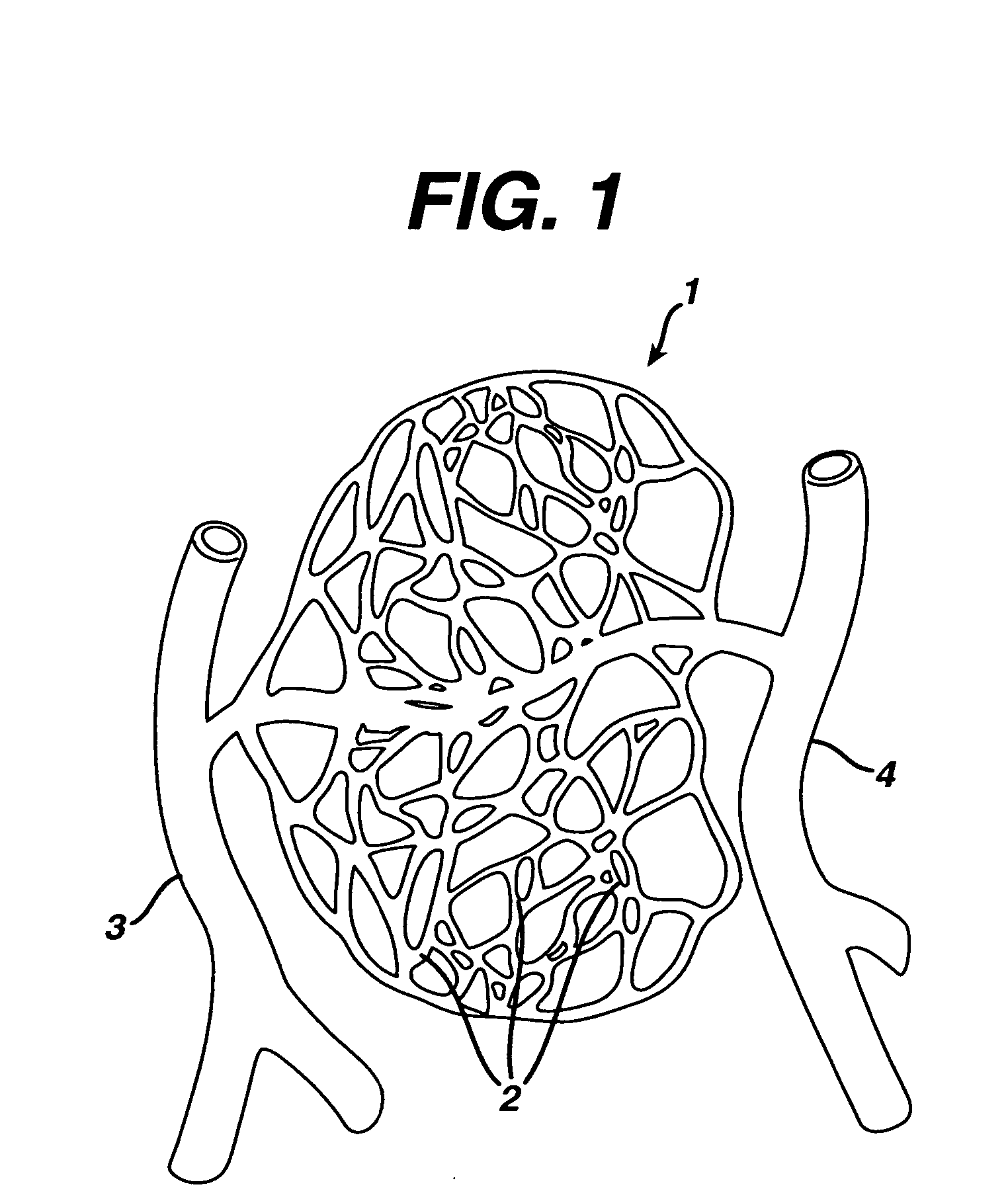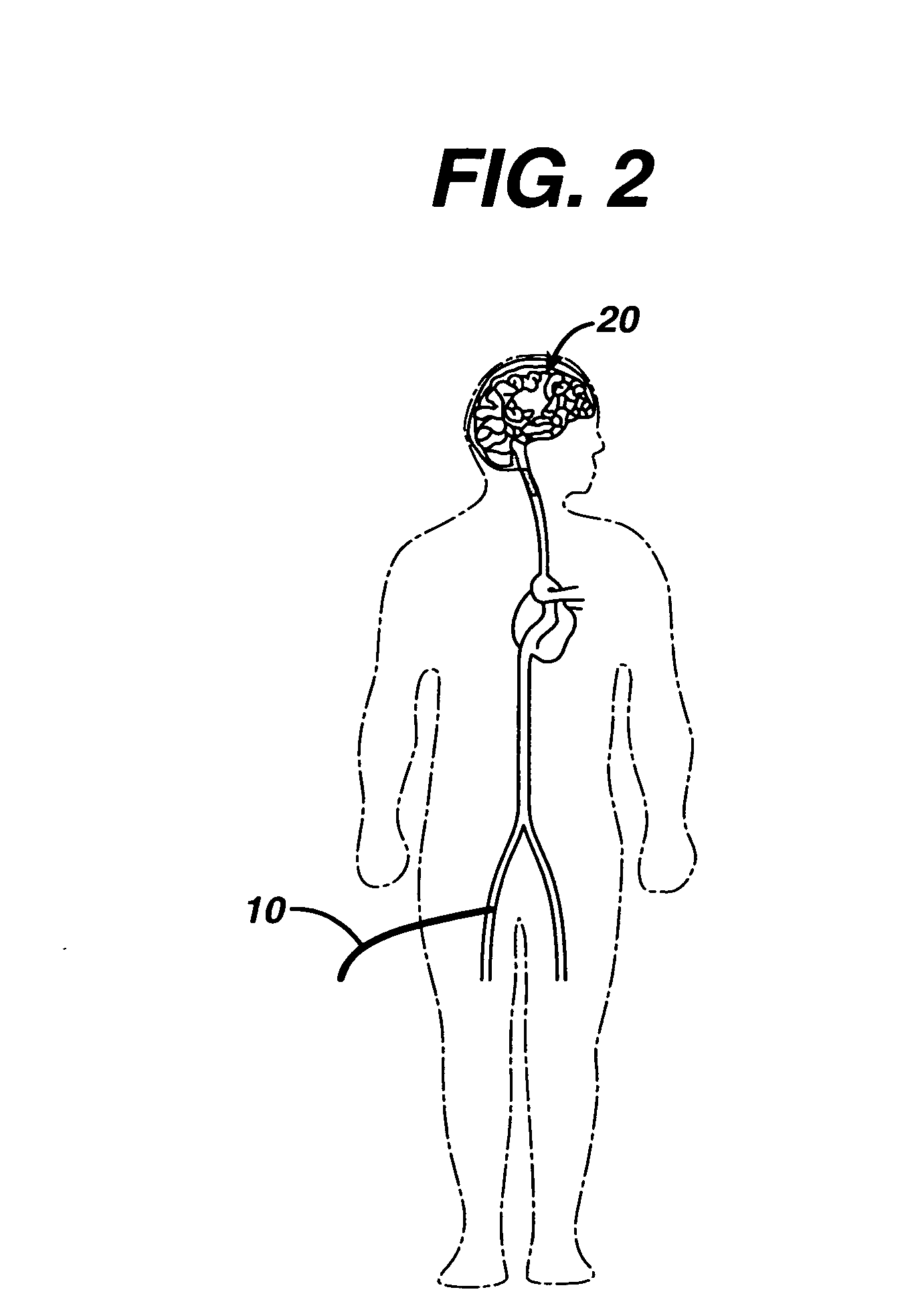Systems and methods for occluding a blood vessel
a technology of occluding system and blood vessel, which is applied in the field of system and method for occluding blood vessel, can solve the problems of occluding smaller blood vessels, affecting the occlusion effect of smaller blood vessels, and reducing the number of capillaries within the capillary bed, so as to achieve a convenient and convenient manner with minimal risk of damage to adjacent blood vessels or tissues
- Summary
- Abstract
- Description
- Claims
- Application Information
AI Technical Summary
Benefits of technology
Problems solved by technology
Method used
Image
Examples
Embodiment Construction
[0024]FIG. 1 illustrates generally the vascular anatomy of a capillary bed 1 in a human. The capillary bed 1 is comprised of capillaries 2 fed by arterioles 3 at one side of the bed and that feed venules 4 on the other side of the bed. The artisan will readily appreciate that the systems and methods described herein for occluding one or more blood vessels apply to human as well as non-human vasculatures, although the systems described herein are generally directed to occluding one or more targeted blood vessels in a human patient. Likewise, the artisan will readily appreciate that although the systems and methods of occluding one or more blood vessels as described herein are directed to occluding one or more capillaries in a capillary bed, blood vessels other than capillaries within the vasculature of a human or non-human patient may also be occluded using the systems and methods of the invention as described herein.
[0025] Referring still to FIG. 1, in the case of leaking capillari...
PUM
 Login to View More
Login to View More Abstract
Description
Claims
Application Information
 Login to View More
Login to View More - R&D Engineer
- R&D Manager
- IP Professional
- Industry Leading Data Capabilities
- Powerful AI technology
- Patent DNA Extraction
Browse by: Latest US Patents, China's latest patents, Technical Efficacy Thesaurus, Application Domain, Technology Topic, Popular Technical Reports.
© 2024 PatSnap. All rights reserved.Legal|Privacy policy|Modern Slavery Act Transparency Statement|Sitemap|About US| Contact US: help@patsnap.com










